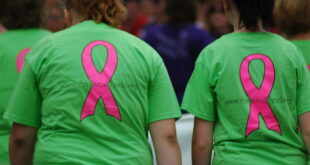“[…] There is a human instinct to avoid dead things. A line between the living and the not living. We care for our dead because we knew them but generally we don’t play with them.
“The historical instances in which humans have engaged in necrophilia are usually traumatic…”
The following Letter to the Editor on the possible traumatisation of Trinidad and Tobago was submitted by Naette Yoko Lee:

I’m going to propose a theory so listen well. Let’s draw a line between two seemingly unrelated things and then another line to a thing that I think affects them both. The corpse on the truck and the killing of the women (read: people).
There is a human instinct to avoid dead things. A line between the living and the not living. We care for our dead because we knew them but generally we don’t play with them.
The historical instances in which humans have engaged in necrophilia are usually traumatic. Lynching in the US is a good example of this.
The violation of the body, a certain kind of body, blurs the line between the living and corpses. White Americans collected pieces of the dead as trophies and souvenirs. In order to get to that mental place, the image of the body needed to be decimated, dehumanised.
Now, what would make someone think it would be a good idea to put a corpse on a truck and drive it around the savannah? The same instinct. The removal of the sanctity of the body. It is seen as a toy, a doll to be dressed and played with. That’s item one.
Now, item two. The dead women. The sanctity of the body had, again, been disrupted. Dehumanised. A thing to be played with and left in a shallow watercourse 60 meters from the road.

(Copyright Newsday)
The sickness that makes someone capable of leaving a naked corpse on the side of the road is rooted in the inability to see that body (male or female) as human. The two events are governed by the same rationale.
So what is the source? I’d say item three. We are now used to seeing bodies, in particular black bodies, splayed and degraded on the side of the road. Murder scene after murder scene.
When police raid parties and people are put to sit on the floor. When Gary Griffith makes children lie face down on the pebbles. These are not things bodies should normally be doing.
Over time, we are learning or have learned to accept poses and postures of degradation. Mostly of dark skinned bodies but generally of bodies.
Ian Alleyne, the forerunner of the genre, famously stuck a ball point pen into the bullet wound of a corpse at the morgue. As a people, we rejoiced. How could we know that he was pulling back a veil that protected women and children, that protected us all?
Again, the instinct to create or play with dead things is a trauma response. We have been traumatised. And so here we are at the intersection of the three.

We have encouraged each other to believe the image of someone lying on the pavement—dead or alive but degraded—is excusable because of something they have done. What we didn’t count on is that if you can treat one person like an animal, you can treat anyone like an animal. And there are some among us not grounded enough, not whole enough to control that impulse.
This is a multifaceted issue. Again, mental health, substance abuse, poverty, the collapse of the family, the pressures of a pandemic, and the acceptance of violence as a way of life have all contributed.
But we must be warned that they are all connected; and ignoring those connections will ultimately lead to the death of someone else.
Want to share your thoughts with Wired868? Email us at editor@wired868.com.
Please keep your letter between 300 to 600 words and be sure to read it over first for typos and punctuation.
We don’t publish anonymously unless there is a good reason, such as an obvious threat of harassment or job loss.
 Wired868 Wired868 for smart sport news and opinion
Wired868 Wired868 for smart sport news and opinion







A fascinating thesis but for me the race thing seems dragged in against its will, at least as far as T&T is concerned.
I was much, much younger when Charles Manson killed Sharon Tate and co but that trauma—photos of white people on the newspaper, not on TV—abides. And that is but one example.
I agree and appreciate the criticism. Perhaps I could have developed that thread better. But I suppose it’s a side-effect of having a decolonial perspective to know for certain that blackness (read a s race) has to do with the issue at hand, must have to do with it somehow, even if how it has to do with it is not clearly enunciated.